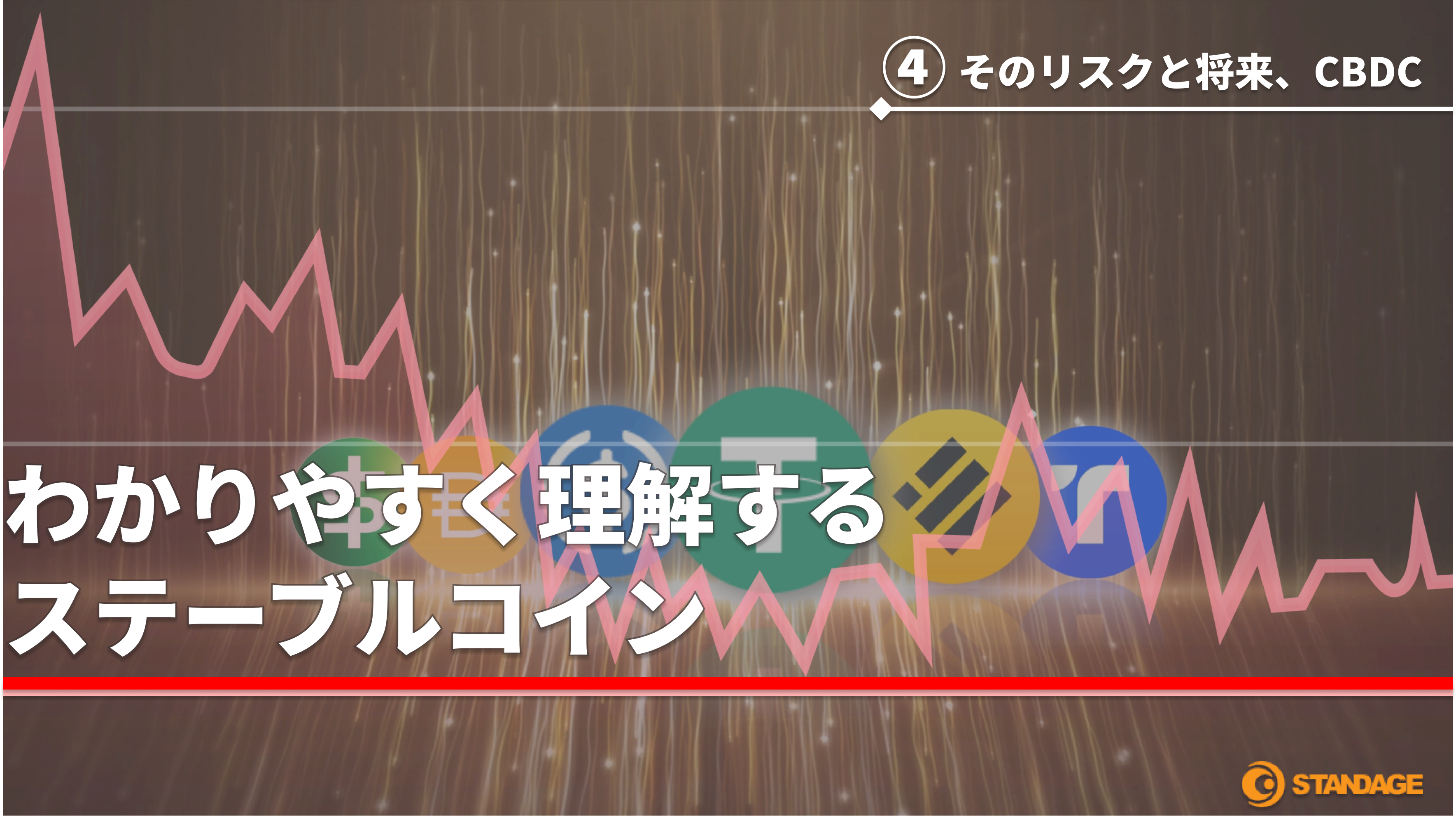2023.12.19

*This column is a serial. The previous article wasHere*
Stablecoins and CBDCs
Have you ever come across the term "CBDC"?
This is also a type of digital currency that has recently become a hot topic around the world.
Unlike legal tender, CBDCs are currencies that are stored and managed digitally, which is a commonality with stablecoins. But what are the differences between CBDCs and stablecoins?
This will be the final installment of the series, and will provide an easy-to-understand explanation for those who are wondering, "What is CBDC?" or "I've heard of both, but I don't know the difference between it and stablecoins."
What is CBDC?
CBDC (Central Bank Digital Currency) is a type of currency issued by a central bank of each country, such as the Bank of Japan in Japan. It is a digital currency that is issued and stored in electronic form, rather than traditional paper notes or coins.

CBDCs may be introduced as central banks use digital technology to control a country's money supply and make payments systems more efficient.
Typically, the value of a CBDC will be fully equivalent to the legal tender issued by the central bank and will be recognised as official currency in a domestic economy.
As of June 2023, 11 countries have officially adopted CBDCs, with a further 53 planning to do so and 46 currently researching them.
Unlike Bitcoin and stablecoins, CBDC transactions will be controlled by the issuing authority, the central bank.
Furthermore, unlike digital tokens, CBDC is not seen as a means of financial speculation, but rather as a means to provide convenient financial services and efficient digital payments, for example to people who do not have bank accounts.

Central banks around the world, primarily in the United States, are conducting various studies to determine whether CBDCs are a safer financial instrument than fiat currencies used offline.
CBDC is essentially a legal tender that circulates online, but it is technically possible for it to be used for payments in offline environments where there is no internet connection. This is expected to prove advantageous, particularly in emerging countries where it is difficult for individuals to own bank accounts.
As a result, while research into CBDCs is also underway in developed countries such as Japan, the United States, and Europe, emerging countries are tending to move quickly towards adoption.
The difference between stablecoins and CBDCs
Issuer
Stablecoins are issued by private companies, such as Tether, which issues USDT, and are managed using the DeFi (decentralized finance) system.
On the other hand, CBDCs will be issued by a country's central bank and will operate within CeFi (centralized finance).
Therefore, CBDC itself is treated the same as legal tender, but stablecoins have a 1:1 peg between the legal tender reserve as their backing asset and the amount of stablecoin issued, making their value equivalent only in theory. Therefore, even if stablecoins are 1:1 exchangeable with legal tender, this does not mean that they are legal tender themselves.
・Stability of value
Stablecoins are tokens that have a maximum guaranteed 1:1 value to fiat currency, but they do not have the exact same level of stability as fiat currency.
In other words, 1 USDT or 1 USDC is designed to guarantee its value as much as possible so that it can be exchanged for 1 USD, but if a problem such as the issuer's credit risk occurs, liquidity may decrease and it may no longer be possible to exchange it 1:1.
The image is a chart of USDT:USD. Although the ratio of 1USDT to USD is roughly maintained, it is not possible to guarantee a 1:1 exchange rate at any time.
・Interest accrual and operational risk
CBDC will be treated the same as fiat currency, so simply holding it will not generate interest or investment income.
Central banks and research groups around the world have announced that they are studying measures to allow CBDCs to earn interest, but no meaningful progress has been made yet.
Therefore, CBDC would be better suited as a means of payment that is convenient and fast and can be substituted for cash, rather than as an asset for investment purposes.
On the other hand, stablecoins allow users to lend their assets to others through participating in liquidity pools or staking, and can earn interest like bank deposits.
Well-known DeFi P2P lending services offer yields of over 10% for coins such as USDC and USDT (lending rates and yields vary over time).
Stablecoins are also attracting attention as a profitable investment option because they allow users to earn profits compared to traditional financial instruments such as deposits and RP.
Of course, it should not be forgotten that stablecoins, like stocks, carry the risk of losing principal.

The Future of Stablecoins
Some optimistically predict that stablecoins could eventually replace fiat currencies.
However, there are still many risk factors and uncertainties involved in replacing current financial instruments with guaranteed stability, and as is the case with all digital currencies, including stablecoins, there are still many regulations that need to be overcome. As a result, monetary policymakers around the world are of the opinion that it is too early to conclude that the future of stablecoins is completely bright.
However, there are high expectations for the use of stablecoins in the international trade market, which is said to be worth approximately 2,800 trillion yen.
Especially when it comes to trade with emerging countries, traditional trade settlement methods require going through multiple intermediary banks, which means high fees and long transaction times. However, if trade settlement methods using stablecoins and blockchain become available, they can significantly reduce both time and costs.
Over the course of four articles so far, we have explained what stablecoins are and how they differ from CBDCs.
Stablecoins are the key to unlocking the future of digital currencies by seamlessly connecting fiat and digital currencies.
This valuable asset will bring change to financial markets with its stable value and innovative technology, so look forward to future innovations.
For trade-related inquiries, please contact us here.